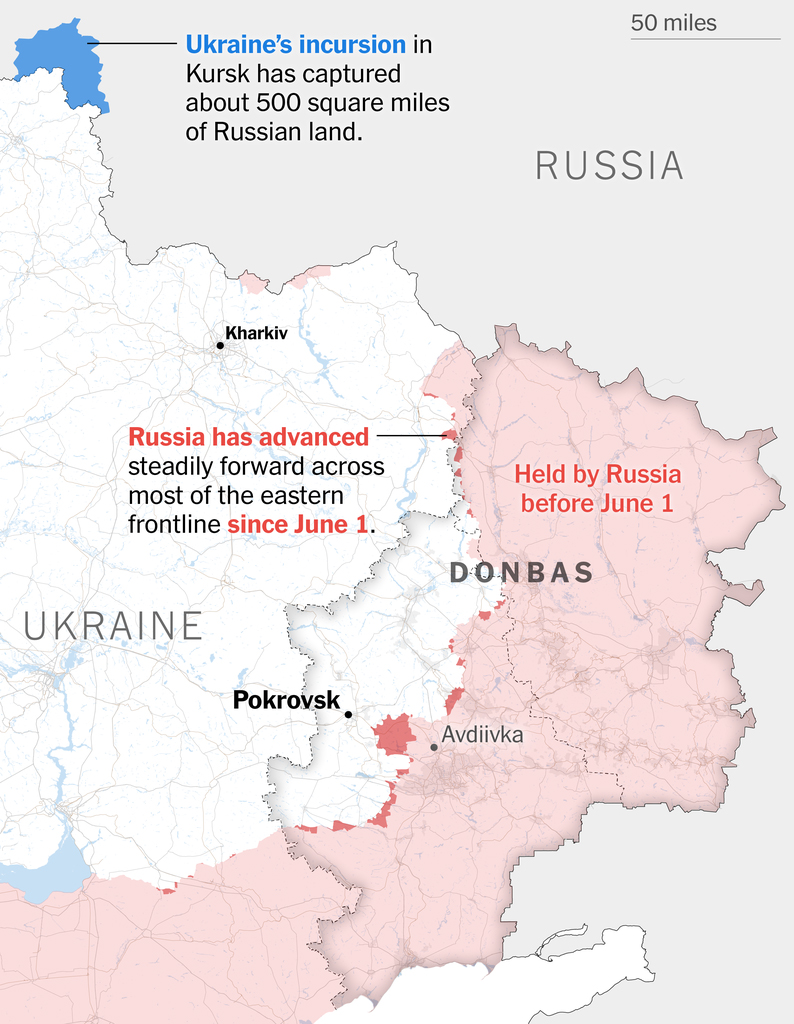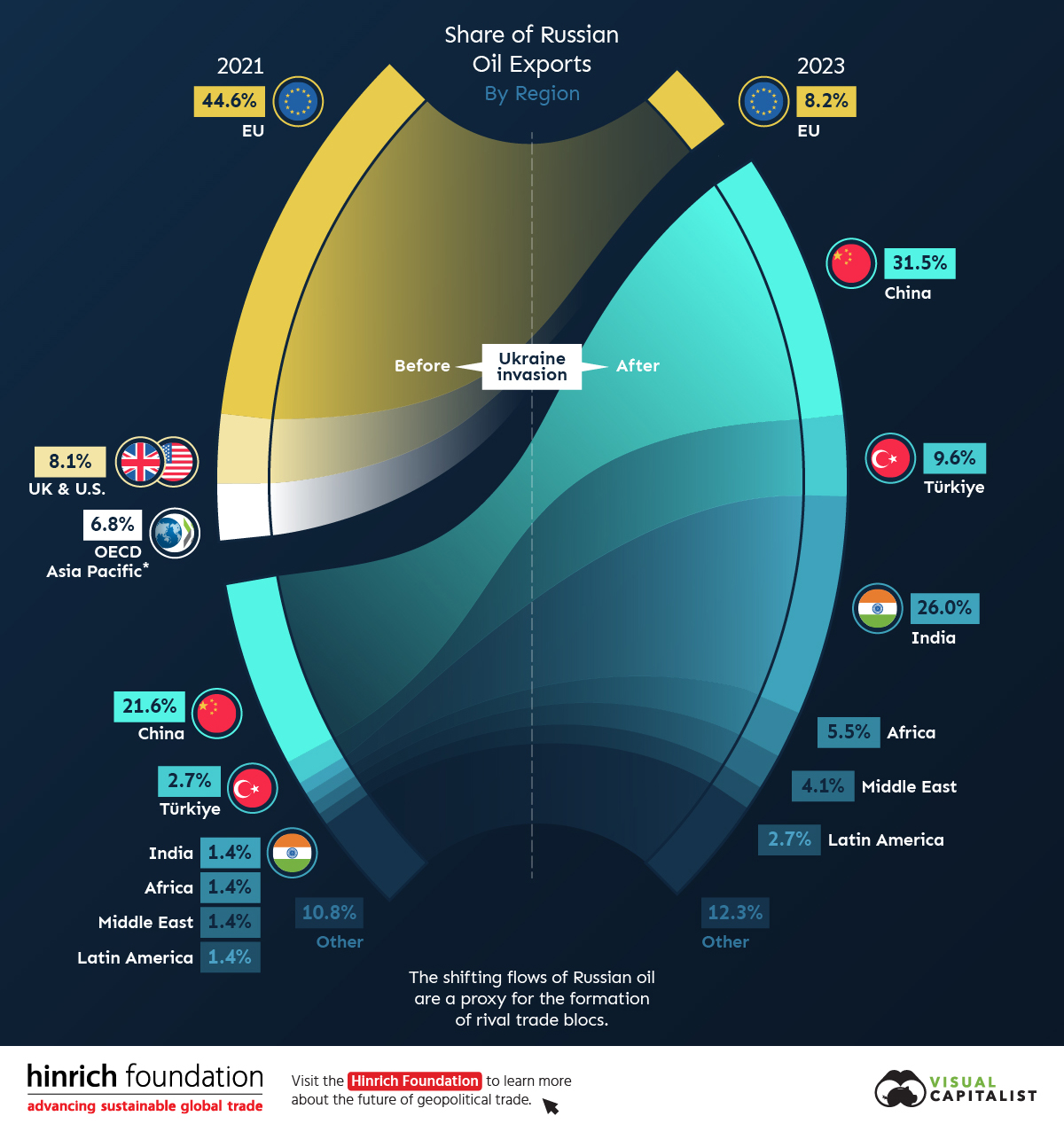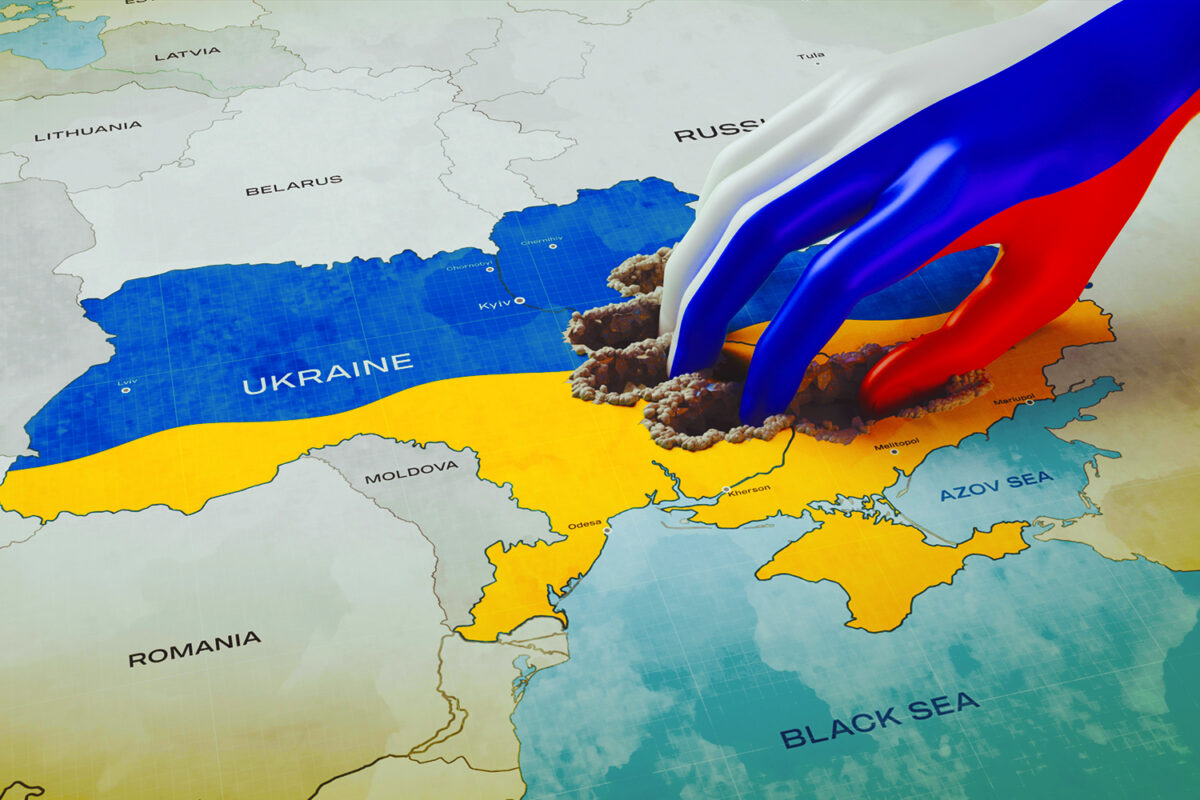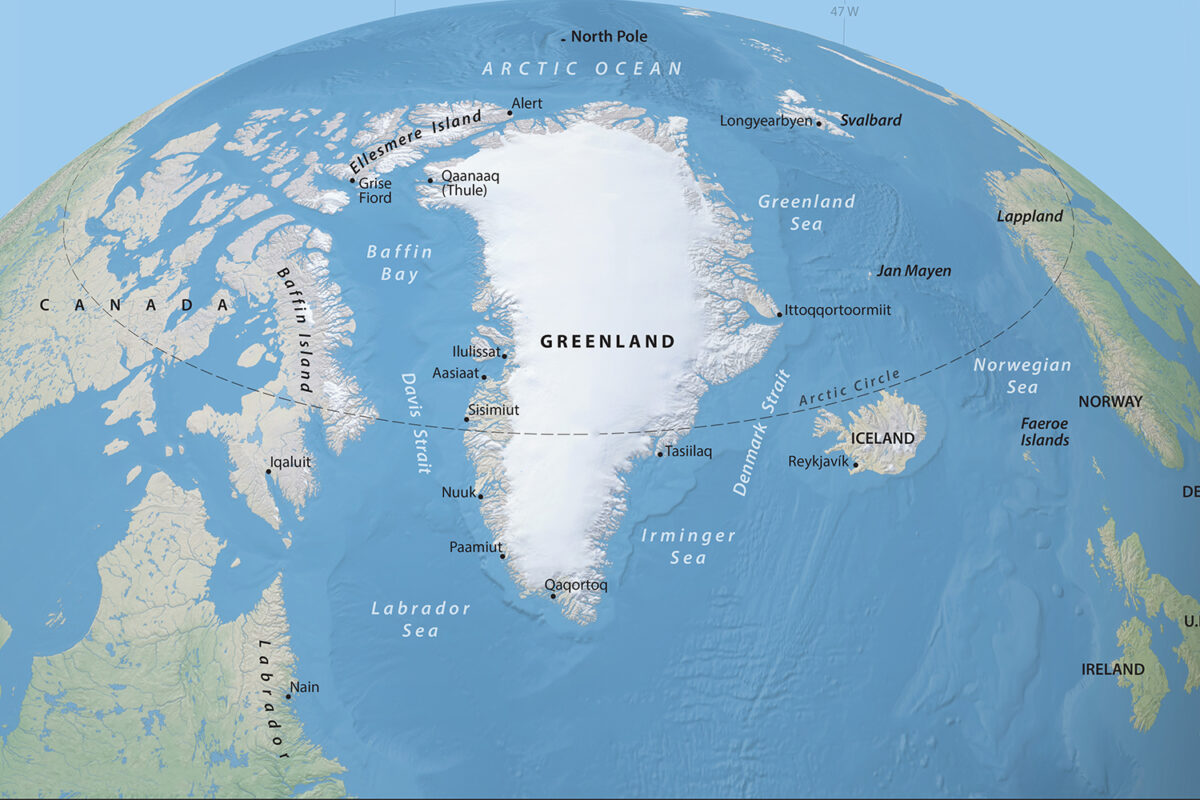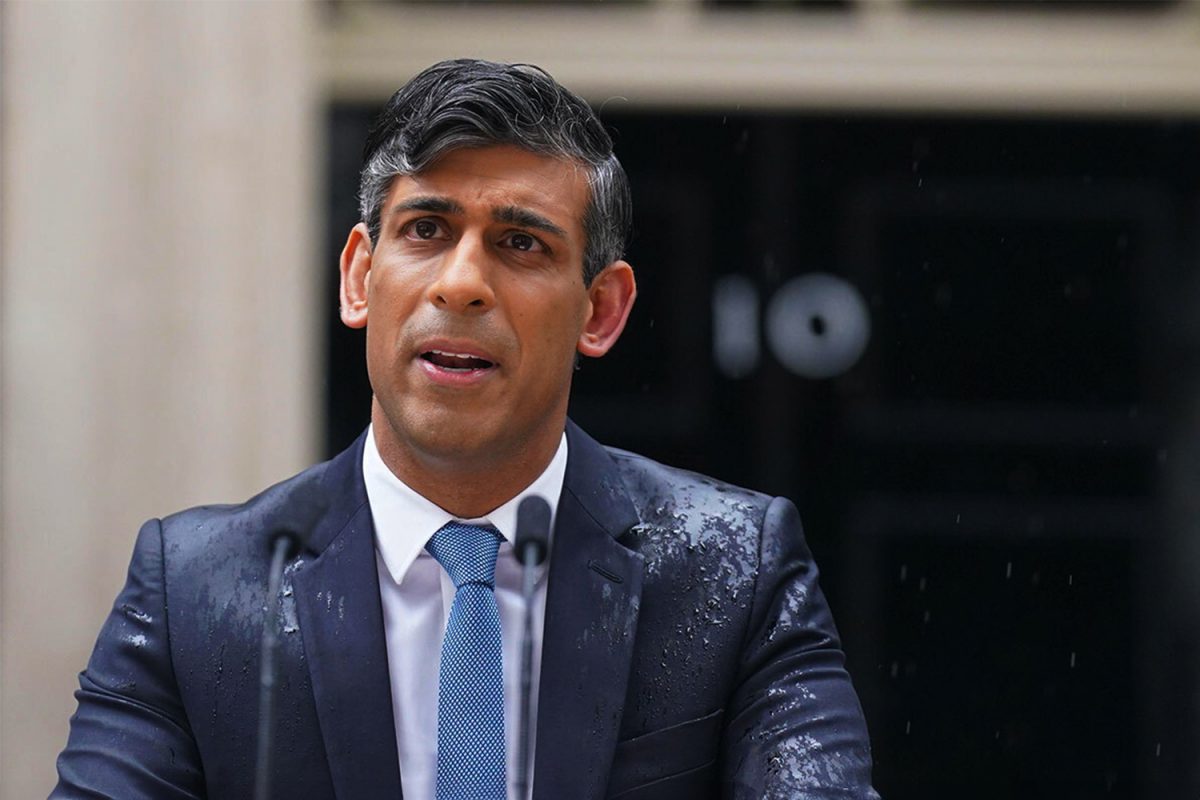Western media went into a frenzy in August when Ukrainian troops launched a surprise invasion into Russia’s Kursk Oblast. All the talk of supplying Ukraine with long-range strike capability comes as we are less than five months away from the three-year anniversary of the conflict. But even before this uptick in activity Ukraine had run out of steam and failed in altering the battlefield reality. The success back in 2022 when Ukraine halted Russia’s capture of the capital Kyiv is now a distant memory and with Russia now reversing Ukraine’s Kursk invasion, Ukrainian attempts to regain lost territory are looking more unlikely now.
Ukraine’s 2023 summer offensive was meant to bring the initiative back to Ukraine and weaken Russia’s position in the territory in East Ukraine it was occupying. But Ukrainian forces, despite weapons and equipment from NATO, failed to counter Russia’s extensive fortifications. Ukrainian commanders were forced to admit in the end when winter set in that they struggled with Russian tactics. By December 2023 president Zelensky admitted the counteroffensive had failed. Zelensky had already admitted the month before during a joint press conference with European Commission President Ursula von der Leyen that there was growing fatigue in the West over his country’s war against Russia and that it was “…clear the war in the Middle East…” had “…taken over the focus of international attention.” As 2024 began Ukraine had few resources with which to mount another counteroffensive. As a result, Ukraine focused on launching hit and run attacks along the long frontline against Russian forces. It also increased drone and missile strikes deep into Russia, with some targeting Moscow and one spectacular attack on the Kremlin itself.
Russia was already on top in the war when 2024 began. Russia’s strategy has been to eschew large-scale attacks for smaller assaults to slowly take small parcels of Ukrainian territory. Russia focused on consolidating the job in the Donbas by overwhelming those remaining strategic towns and filling out the border of Donetsk and Luhansk oblasts with Russian colours.
Invading Mother Russia
This was the context when Ukraine launched the invasion of Russia by targeting the Kursk Oblast on the 6th of August. This marked the first time Ukraine directly attacked and seized Russian territory since the war began. President Zelensky explained that the cross-border incursion into Kursk is step one of a four stage plan for peace. He continued by explaining that the “…second direction is [securing] Ukraine’s strategic place in the security infrastructure of the world… [the] third direction is the powerful package of forcing Russia to end the war in a diplomatic way, and the fourth direction is economical.” Whilst the western media presented this incursion in a spectacular light, repeating Ukrainian commanders claims that Ukraine now controlled nearly 1,000 square kilometres of Russia, this Ukrainian offensive raised more questions than answers.
The 1,000 square miles of Russia that Ukraine now controls is sparsely populated. Rather than targeting Russian occupied Ukraine or the supply lines to these troops Ukraine has targeted an area that is not part of any battlefront. The offensive required Ukraine to transfer combat brigades from all over Ukraine and concentrate them at the Kursk border, including many of its best brigades in Donbass. Ukraine moved up to a third of its total brigades to the Kursk region. With an amassed combat force of around 70,000 troops Ukraine easily overwhelmed Russia’s thinly guarded Kursk border which was manned with border guards. But with Ukraine having to fight over an 800 mile frontline and maintain pressure on Russia, they were never going to be able to maintain any type of occupation of Kursk.
Whilst much of the world has been watching Kursk, what they have not been watching is the Russian response and developments in the Donbass. To enable its Kursk offensive Ukraine has left its Donbass front seriously weakened. So weak that Russia’s offensive in the Donbass is intensifying almost daily with growing success. If Zelensky’s aim was to distract Russia with the Kursk offensive or get Putin to overreact, he’s failed miserably as Russia initially brought in special forces and marines who have been making rapid gains and are closing in on the Donetsk city of Pokrovsk, which was once a major hub for the Ukrainian military. In this war Russia will always have numerical advantage so it doesn’t need to reduce troops on one front to fight another front.
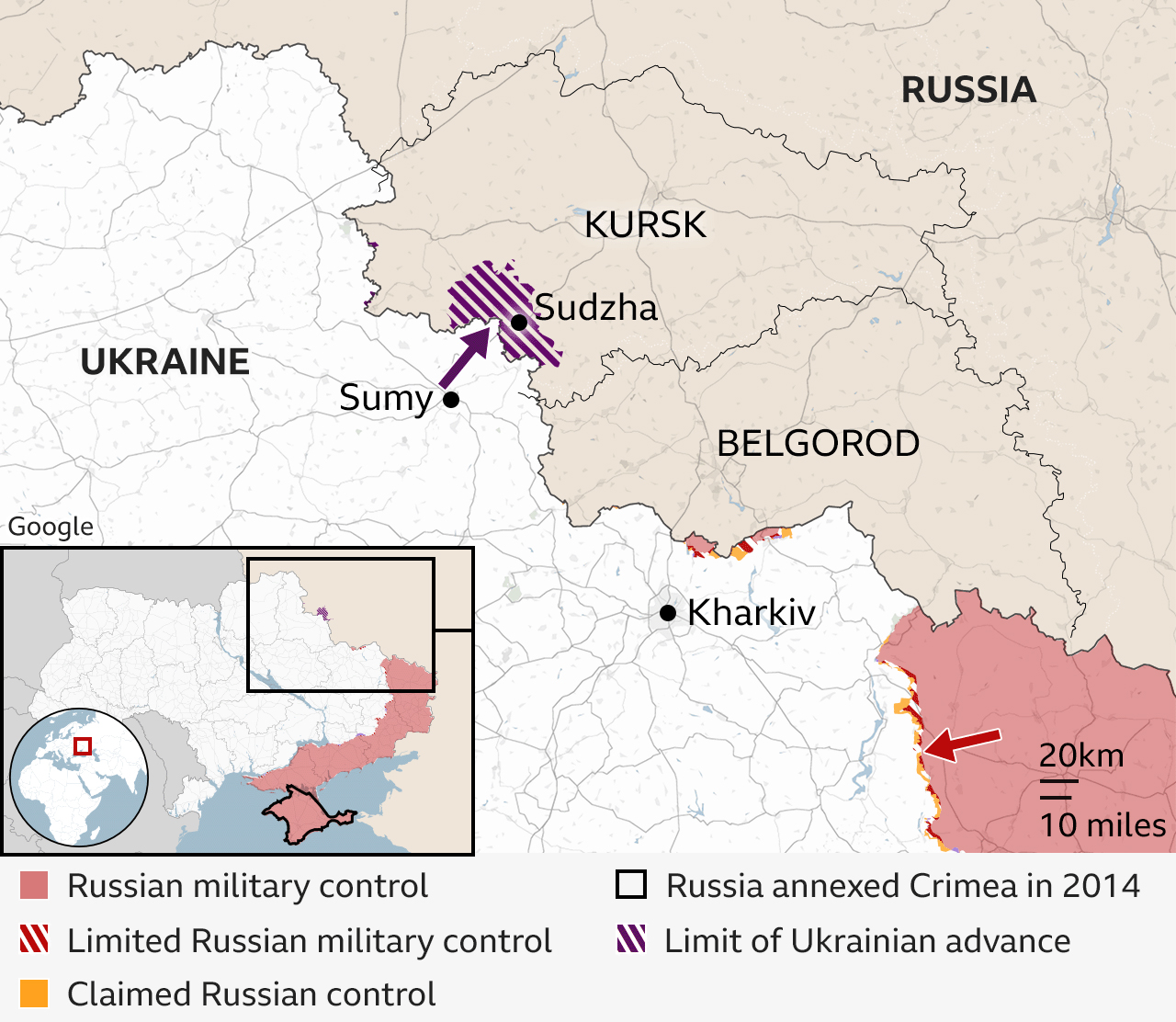 It seems more likely there were political objectives rather than battlefield or strategic objectives in the Kursk invasion. In a Telegram post on the 16th of August, Zelensky referred to captured land in Kursk as an addition to his “exchange fund.” Meaning, Kursk is less about overall military victory, than about gathering bargaining chips to trade in future peace negotiations with Russia. Then on the 19th of August, Zelensky said in another post that Ukrainian forces’ incursion into Russia’s Kursk region showed the “naivety” of the “…illusory concept of the so-called red lines in relation to Russia,” adding that “…if our partners lifted current restrictions on the use of weapons on Russian territory, we wouldn’t need to physically enter the Kursk region.” These comments suggest the aim of the Kursk offensive is more to do with fading western interest than battlefield realities. Zelensky needs Russia to escalate to remain in power in Ukraine and maintain NATO support which is waning when it comes to providing military arms and ammunition. The west further believes that funding Ukraine’s war and economy is settled, provided by the seized $300 billion of Russian assets. Western media almost daily has become increasingly critical of the war, recognising it cannot be won. Zelensky therefore needs to show Ukraine still has the ability to fight and NATO needs to provide even more weapons because Russia is escalating the war.
It seems more likely there were political objectives rather than battlefield or strategic objectives in the Kursk invasion. In a Telegram post on the 16th of August, Zelensky referred to captured land in Kursk as an addition to his “exchange fund.” Meaning, Kursk is less about overall military victory, than about gathering bargaining chips to trade in future peace negotiations with Russia. Then on the 19th of August, Zelensky said in another post that Ukrainian forces’ incursion into Russia’s Kursk region showed the “naivety” of the “…illusory concept of the so-called red lines in relation to Russia,” adding that “…if our partners lifted current restrictions on the use of weapons on Russian territory, we wouldn’t need to physically enter the Kursk region.” These comments suggest the aim of the Kursk offensive is more to do with fading western interest than battlefield realities. Zelensky needs Russia to escalate to remain in power in Ukraine and maintain NATO support which is waning when it comes to providing military arms and ammunition. The west further believes that funding Ukraine’s war and economy is settled, provided by the seized $300 billion of Russian assets. Western media almost daily has become increasingly critical of the war, recognising it cannot be won. Zelensky therefore needs to show Ukraine still has the ability to fight and NATO needs to provide even more weapons because Russia is escalating the war.
The Economic War That’s Failed to Cripple
Western officials and commentators described the sanctions against Russia as “crippling”, “debilitating” and “unprecedented”. With these adjectives there was surely no way that Russia’s economy would withstand the pressure. But as we approach the third-year anniversary of the war, far from being crippled, Russia’s economy is growing. Despite more than 16,000 sanctions imposed against Russia her economy grew by 3.6% in 2023 and will grow by 2.6% in 2024, more than many western economies.
Russia has replaced its energy exports to Europe with China, India and Turkey. China has played a central role. In 2023, Russian officials stated that around half of the country’s oil exports were exported to China — far higher than before the sanctions were imposed. The price cap introduced in 2022 to limit the income from oil sales has seen Russia get around this with a fleet of shadow tankers. Western experts concede that Russia has been able to circumvent this quite easily. Russia has been preparing for an economic war with the west since its Crimea invasion in 2014.
Russia was preparing for western sanctions and managed to isolate its economy from transactions requiring American dollars. Russia pegged its currency, the ruble, to gold, and 5,000 rubles will now buy an ounce of pure gold. According to the World Gold Council, Russia is now the second largest producer of gold. Russia has made big strides in shifting to a war economy, which has allowed it to supply its forces. This is the opposite of Ukraine that is dependent on the west to stay in the war. Social spending and increased taxation on energy companies has for the moment allowed Russia to continue with its war efforts, but if the war continues and goes on for years this will not be sustainable.
US Elections
The war in 2024 is going along the same lines of 2023. Russia is on top in the war and the disastrous invasion back in 2022 is a distant memory. With the US election due in November many are waiting to see the impact this will have based on who takes office. If Kamala Harris takes office she will likely maintain support to Ukraine around current levels and continue with the current Biden policy of providing support to keep Ukraine in the war. But this is facing stiff challenges as Congress pressures the White House to reduce financial support. Harris has been trying to paint an image in contrast to the position of the Trump camp.
Donald Trump, if he wins office, has been making clear that he wants to de-prioritise supporting Ukraine in favour of other policy priorities. Trump has repeatedly said he would seek to end the war in Ukraine quickly. Whilst it’s unlikely Trump can achieve this immediately if he wins the election, it’s likely Ukraine will struggle to get funding from the US and the burden of the war effort will fall to Europe and Ukraine themselves. This means Zelensky will need to gain as much territory before the January 2025 handover to a possible Trump administration as by that point he will have no choice but to pursue negotiations with Russia. Even if Harris wins the election, the democrats may find Congress reluctant to continue funding the war effort.
Why is the US Dragging its Feet?
This raises an important question why the US, who has supported Ukraine in its war effort and stopped Ukraine from negotiating with Russia, despite the promise of ‘however long it takes.’ But then the US withholds or refuses to provide sufficient military equipment and what’s necessary for Ukraine to deliver a fatal blow to Russia. Why doesn’t the US ramp up help so Ukraine can defeat Russia?
It’s important to keep in mind this is not something new but the same position the US took on Syria when it never provided the many militia groups with sufficient quantities of weapons or more sophisticated weapons that would make the difference in the war. Israeli officials and American hawks in the US have both criticised the White House for not providing sufficient ordinance during Israel’s slaughter of Gaza. These contradictory positions are because the US is pursuing aims that are different and in many cases the opposite to the publicly stated position.
In the case of the war in Ukraine the US has long had a strategic view of the European continent and this war for the US is a means to an end and this end is very different to the view the Ukrainians have. America’s strategic outlook towards the world begins with the challenges that can emerge from the Eurasian continent as this continent consists of multiple powers as well as a market that can rival the US economy. This is the continent where rival powers can and have emerged. The US intervened on the European continent in both World Wars which stopped Germany becoming a continental power. Ever since, the US has provided security to Europe to stop both Soviet and Russian domination of the continent. But when the Soviet Union collapsed in 1991, Europe stopped worrying about the Eastern threat and talk of an independent European defence structure began alongside a Europe independent from the US. The US needed Russia to remain a threat to Europe so the continent see’s the constant need for US security guarantees. During President Trump’s term transatlantic relations hit rock bottom with French president Emmanual Macron questioning the viability of NATO and with Trump undermining NATO and criticising Europe for not contributing sufficient finance towards security alliance. When Russia invaded Ukraine on the 23rd of February 2022, Europe got firmly behind the US for its security and Russia did what the US always needed – to show it’s a threat to European security and sovereignty.
In the case of the war in Ukraine the US has long had a strategic view of the European continent and this war for the US is a means to an end and this end is very different to the view the Ukrainians have
It is not in US strategic interests for Russia to be defeated, it’s also not in US interests for Russia to also defeat Ukraine and shift the balance of power on the European continent. This is why the US has supplied Ukraine with weapons and supplies to stay in the battle, but not the appropriate quantity or quality to defeat Russia. Russia being a menace to Europe actually serves the US agenda, but Russia shifting the balance of power on the continent doesn’t serve the US agenda. The US used the war to get Europe firmly behind it for security purposes. The US used the war to end Germany’s energy relations with Russia, something the US never liked. France, who opened up its own channels with Russia prior to the war, is now firmly on the side of the US. The Ukraine war has allowed the US to create a balance of power that serves its strategic agenda. Unfortunately, Ukraine is merely a proxy war for the US and that’s why the US will not go to war with Russia for Ukraine, unless Ukraine was overrun by Russia which would shift the balance of power on the continent.
Both Kamala Harris and Donald Trump are not calling for a departure from what serves US strategic interests. The US now has Russia under extensive sanctions which will take Moscow years and numerous negotiations to get removed, something the US will use to get concessions from it. The US has made it difficult for most nations in the world to trade in energy with Russia, as they want to avoid US sanctions and with Russia expelled from the SWIFT system and Russian currency reserves in western banks frozen and effectively seized the US is in a strong position for Ukraine to begin talks, as Trump advocates. If Kamala Harris becomes president and continues with Biden’s policy of drip feeding Ukraine, which until now has never been enough to change the battlefield reality, this is a continuation of the status quo which is not aiding Ukraine in the war.
No single weapons system will change the trajectory of the war and the US and Europe have consistently not provided sufficient weapons systems that will deal a fatal blow to Russia. The end game is one of a few possibilities. This first would be a Russian breakthrough from the Donbass up to the Dnieper river. This would prove to everyone that no amount of western weapons can prevent Russia from defeating the Ukrainian military. The second possible outcome is the western public realising the risk of war escalating is not good for global well-being, and consequently a stronger push is needed to find a solution in peace negotiations instead of military escalation.
As we fast approach the 3-year anniversary of the war David Ignatius opined in the Washington Post the current US position. He believes US goals seem to trying “to escalate to be strong enough to reach a decent settlement.” It remains to be seen if Russia ramps up its war effort or uses its advantages in the war of attrition for a favourable settlement.


